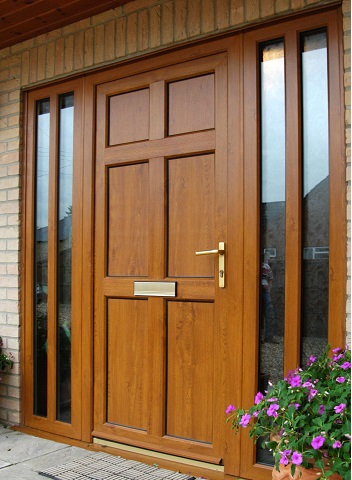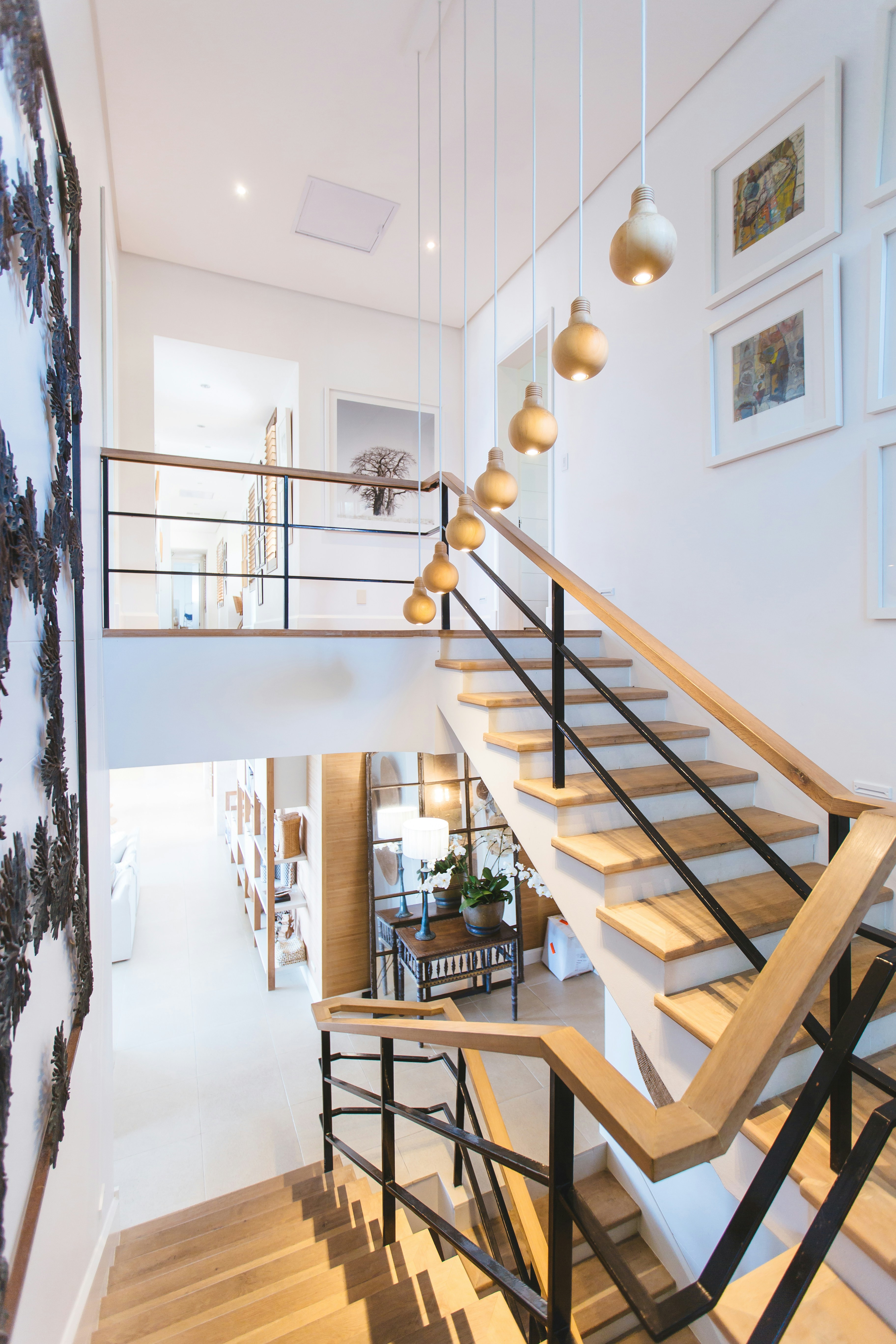Front and back doors may seem like mere entry points, but in reality, they stand as pivotal elements in the grand structure of your home. These portals usher you into your personal haven, underscoring the importance of thoughtful consideration when it comes to selecting the right doors.
Enter Un-plasticised Polyvinyl Chloride, or the more commonly known uPVC, a material that has risen to prominence, much like its role in window frames. It has become a leading choice for front and back door entrances, yet not everyone is fully versed in the myriad advantages that come with installing uPVC doors.
This article is your comprehensive guide, delving into the essentials. From measuring the aperture and understanding security and insulation standards to helping you sift through options when choosing an installation company, we've got you covered. Let's unravel the secrets of uPVC front and back doors, making your home both secure and stylish.
What security and insulation standards should you look out for?
Security is of primary concern when it comes to your front door and you will want to make sure the locks on your

uPVC doors are up to scratch. Both BS7950 and PAS23/24 approval are the accreditations to look out for, and also ask your installer if the doors have Secured by Design status. This is awarded to companies who manufacture security products and pass the tests and standards nominated by the police.
Provided they are installed with high security locks, uPVC front doors are much more difficult to break into compared to timber, which is the sort of deterrent every homeowner wants on their property. Safety wise, it is also more fire resistant, so in an emergency it can be relied up on as a reliable route of escape.
Good insulation in your home is an absolute must and that starts with the front door. Approximately 35% of the heat in your home will escape through the walls and gaps, including the windows and doors. Accreditations to look out for include BS7412, which relates to weather performance and air leakage. The BS EN12608 kitemark refers to extrusion standards, which also includes BS EN ISO 9001 for adhering to high quality internal company procedures. This means the profile of the uPVC front door has been manufactured in the UK to the highest possible standards.
What are the benefits of installing a uPVC front or back door?
Cost
Paying for a cheaper option for your front door doesn’t mean you have to compromise on quality. uPVC is seen as one of the most cost effective materials around and offers benefits that are equal to, if not more, advantageous than timber or aluminium doors.
As long as a uPVC door is maintained correctly over the years, which simply entails oiling the door compartments once a year, there are no other ongoing requirements. This means no longer having to pay for regular treatments to the material, finding the money for repairs for scratched paintwork, rusting metal or any water damage to the woodwork.
Durability
uPVC is renowned for being one of the toughest materials around, which is why it is used on underwater water pipes and sewerage. Its weatherproof properties enables it to withstand the harshest of weather conditions. Being made of plastic means it does not absorb water and as mentioned in the cost section above, will not experience issues such as warping, bloating or offer a welcoming invitation to woodworms.
Style
Even the fussiest homeowner can work with a uPVC door because they are completely customisable. The range of colours, designs, styles and finishes available is unmatched, with some even mimicking a timber aesthetic if that is what you are looking for. Combined with the low cost, this is one of the main reasons why it has become the primary choice for property owners and developers.
Sound and heat insulation
With the traditionally damp weather we experience in the UK, uPVC works as an ideal material that avoids the problems associated with timber doors, such as rotting and warping. uPVC doors are also one of the easiest types to maintain, needing only a wipe down with water and detergent to keep them in good working order.
Reducing condensation and improving insulation is another reason why so many homeowners are now choosing uPVC front doors on their properties. This means your home will be warmer in the winter, and cooler during the summer months. uPVC front doors also feature good sound insulation properties, which is ideal if you live near a busy road or street.

Measuring your front and back door aperture
Over time we’ve heard some disaster stories from readers who have got the measurements horribly wrong on their front and back doors. The procedure is quite straight forward but there are some factors to take into account that sometimes can get over looked.
There are four basic rules to follow:
- Measure the width of the aperture at three points, which are the top, middle and bottom of the opening. The smallest measurement will determine the final width calculation.
- The same applies for the height, so note down the left, middle and right of the opening. As with the width, the smallest will determine the final height calculation.
- Remember to take diagonal measures to check if the door is square
- If the diagonal measurements differ by any more than 10mm in total length you should always use the smallest width and height.
Thresholds and cills

Cills are clipped onto the entrance of the door as a way of draining away rain water so it rolls onto the floor rather than congregating at the foot of the door in the entrance. Most front and back doors have these features but if not they are worth investing in.
- It is advisable to use a low threshold for an entrance door as this will help avoid any potential trip hazards.
- When putting together the calculations for the depth, projection and overall size of the cill, ensure the overhang is at least 50mm from the face of the property.
- Decide on the best way to fit the cill and remember to take into account any added features such as horns.
Choosing the right uPVC door installation company
DIY disasters stories are not only derived from homeowners getting things badly wrong, but from professional companies who do a terrible job despite claiming to be experienced. There are a lot of websites online making a long list of promises and finding the right one for you can be a challenge. Here are some of the key factors to consider when looking at hiring an installer for your new uPVC door.
Double check their competency
The rise of online marketing has also meant a significant rise in ‘creative’ selling. Just because something is stated on a website, it doesn’t mean it is true. Always ask to see examples of their work and they should be more than happy to provide references. You should also be able to see comments online from homeowners on review sites that will give you a broad range of feedback about their competency.
Get more than one-quote
Don’t let yourself be dazzled by an amazingly low quote – chances are there’s a reason why it is so low. It is always best practice to get at least 3 or 4 quotes from competitors to ensure you get a good feel for current market prices. The quote should also breakdown all the costs involved and check whether it is an estimated or fixed price – it could make a huge difference come the end!
Double check their warranty
Never sign any contract or agreement until you’ve read through everything – which includes the fine print in the contract. A big part of this is understanding what their warranty will cover in the event of the installation not going to plan. You do not want to be lumbered with a badly installed door and extra bills for correcting their mistakes just because you didn’t read the contract first.

Trust your instincts
This doesn’t mean blindly putting your trust into the installer of your uPVC door, but it does play a role in making the final decision. Especially if you are split between a couple of companies who look good on both price and service. Trust plays an important part because you are letting a company come into your home to make a big alteration.
Added: October 16, 2018 11:06:09





